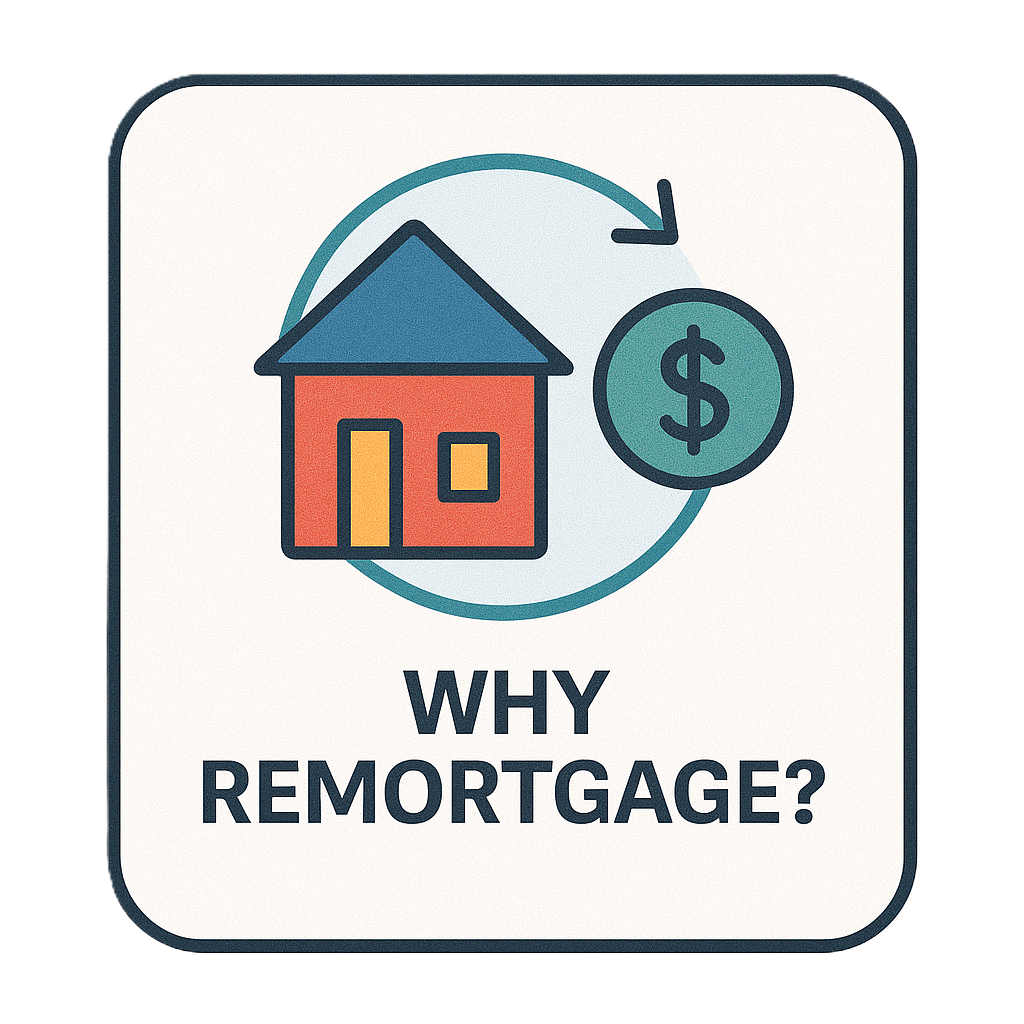
Remortgaging is the process of paying off your existing mortgage with a new mortgage either from your current lender or a different one without changing your property. It’s a financial strategy many homeowners in the UK use to:
- Change the terms of the loan
- Reduce monthly repayments
- Secure a better interest rate
Access additional funds (equity)
Here are some of the most common reasons people choose to remortgage:
- Change Mortgage Terms – Shorten or extend your mortgage term.
- Save Money – Switch to a lower interest rate and reduce your monthly payments.
- Fixed Rate Expiring – Avoid moving onto a higher Standard Variable Rate (SVR).
- Raise Funds – Borrow more for home improvements or other big expenses.
- Debt Consolidation – Combine debts into your mortgage for one monthly payment.


Timing can be key to saving money. Consider remortgaging when:
- You’re nearing the end of your introductory fixed/tracker period.
- Your property value has risen significantly.
- You’re on a Standard Variable Rate.
- You want to overpay or adjust your term.
💡 Tip: It’s best to start looking for remortgage deals 3 to 6 months before your current deal ends.